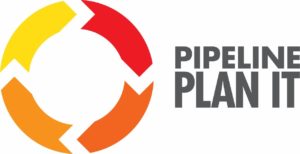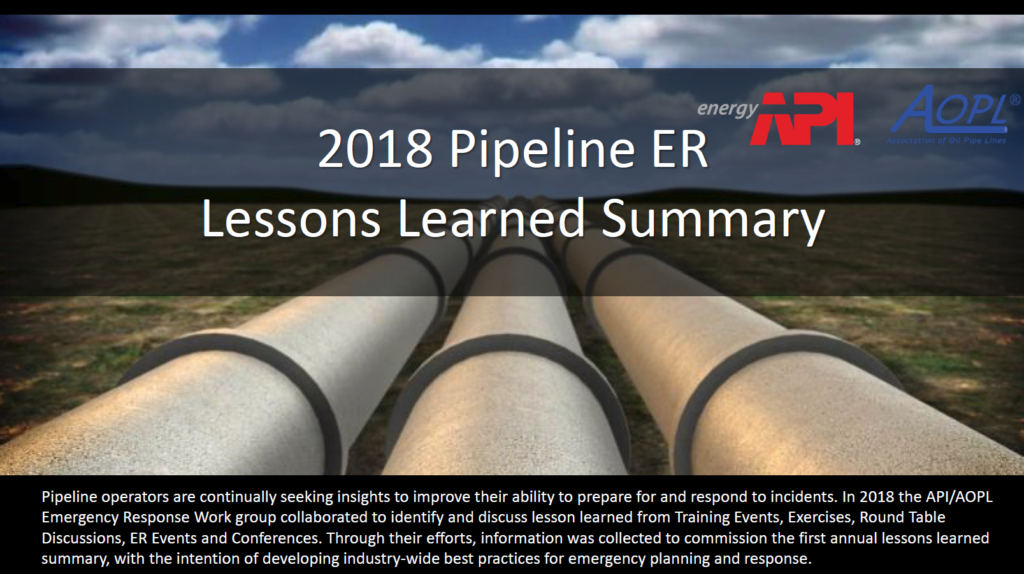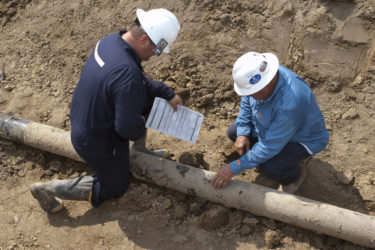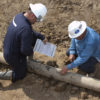Guiding Principles
There are several key parts within API RP 1174:
- Planning: The operator should develop Response Plans to address the response to a release, incorporate a risk-based approach for emergency response planning, and identify the roles and responsibilities of its emergency responders in accordance with NIMS Incident Command System (ICS).
- Emergency Procedures: The operator should establish emergency response procedures that ensure the ability to communicate promptly, respond quickly to the emergency, mitigate risks, and protect people and the environment. There are three initial Emergency Response Phases: Phase 1 discovery, shutdown, and notification, phase 2 resource mobilization, and phase 3 initial response actions.
- Training Exercises: The operator should develop a training and exercise program for emergencies that follow National Preparedness for Response Exercise Program (PREP) Guidelines, and NIMS Incident Command System (ICS). Additionally, operators should participate in annual Incident Management Team (IMT) exercises.
- RESPONSE: The operator should develop Response Plans that has consistency with the National Contingency Plan (NCP), Area Contingency Plans (ACPs), and complies with the National Incident Management System (NIMS). The operator should initially over respond to the incident and scale the response as additional information about the nature of the incident is gathered.
- NIMS Incident Command System (ICS): The operator should use NIMS Incident Command System (ICS). ICS Provides an organization and management structure for an emergency response that allow for the unity of command, common terminology, optimal span of control, flexible and modular organization, and management by objectives.
Here’s How Implementation Works
API RP 1174 establishes a management system framework for liquid pipeline operators’ emergency response programs. The goal of the recommended practice is to identify and mitigate risks, as well as promote safe, timely and effective responses to incidents. In addition, the guidelines are intended to align industry, government and emergency response organizations’ expectations, practices and competencies. To get more information on API RP 1174, see the introduction presentation here.
To help operators adopt the recommended practice and identify gaps, API and AOPL have created an implementation spreadsheet that can be used to review current management systems and programs against the requirements of API RP 1174. This assessment tool will help operators in key areas including but not limited to the following:
- Identify the right personnel to create an emergency management system
- Establish the roles and responsibilities of personnel
- Link and compare the operator’s existing management system to API RP 1174
- Identify and prioritize actions to address gaps
- Assign owners for each activity and track implementation
The planning guide can be found here. Instructions for how to use the planning guide can be found here.
The planning guide should not be considered a replacement for API RP 1174.
Commit to Implement!
API RP 1174 is not a regulation, and operators are encouraged to implement the components which align with the needs of their organizations. For more information regarding the document, please review the Q&A Document that has been prepared.
Industry has a goal to implement API RP 1174 across API and AOPL member companies. To track the level of conformance across the industry (aggregated), API and AOPL are asking companies to sign a commitment letter setting the goal of conforming to the standard as it applies to your operations. API and AOPL do not want to know your conformance with each requirement, but rather how far along in the process you are. The planning guide automatically calculates this for you!
If your organization is interested in API RP 1174 and how it can help your emergency response operations, please let us know! Sign the commitment letter and be a part of the industry push to better emergency preparedness and response.
The tools that have been created here will help you along the path to conformance. The introductory presentation above, or the fact sheet found here, can help explain why RP 1174 is an important step in moving our industry forward, and they are encouraged to be used.











